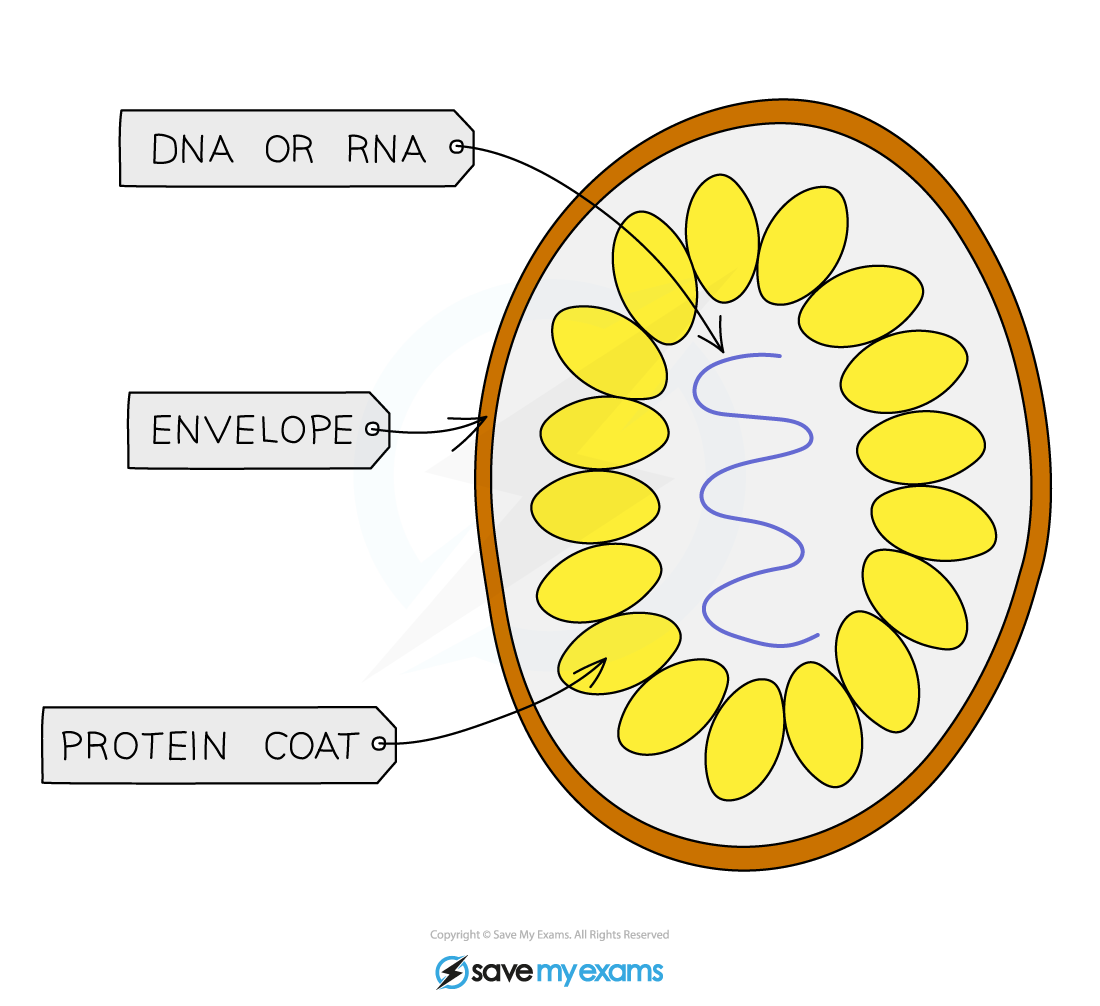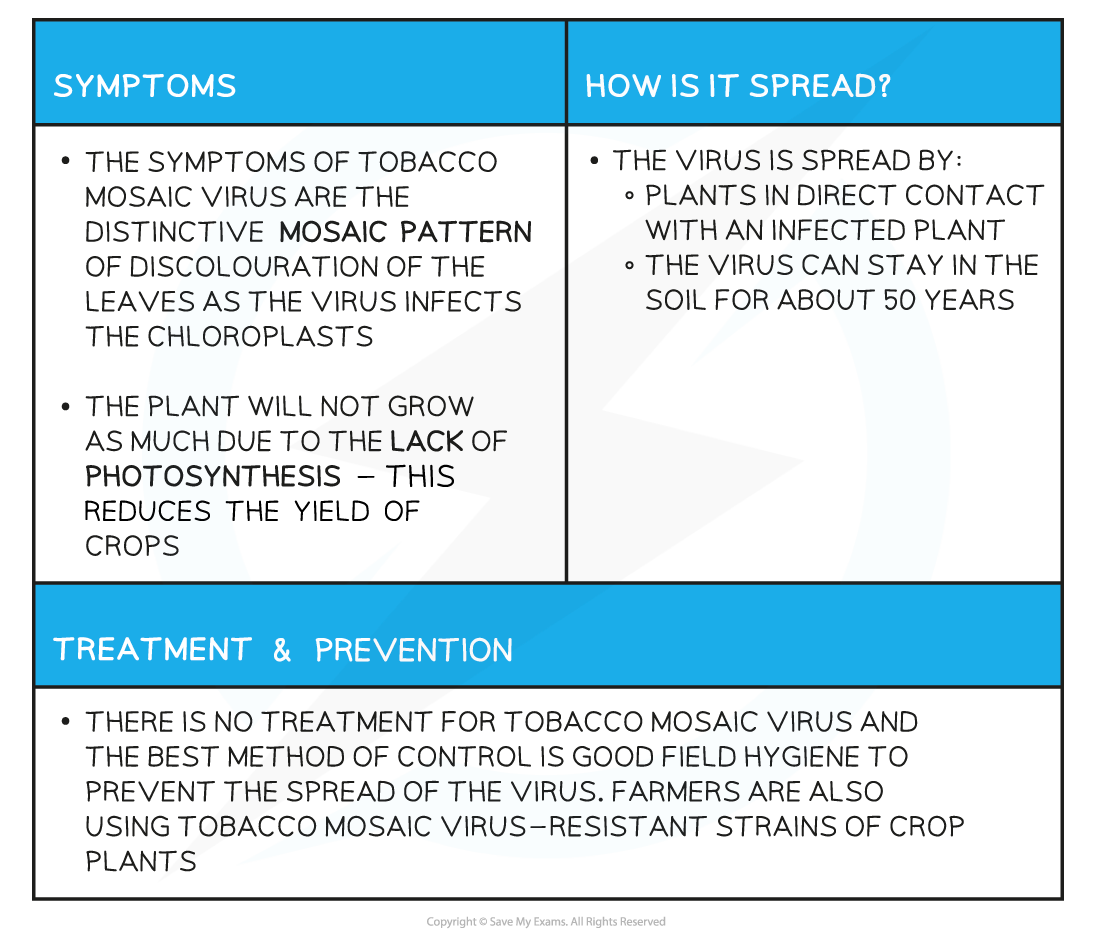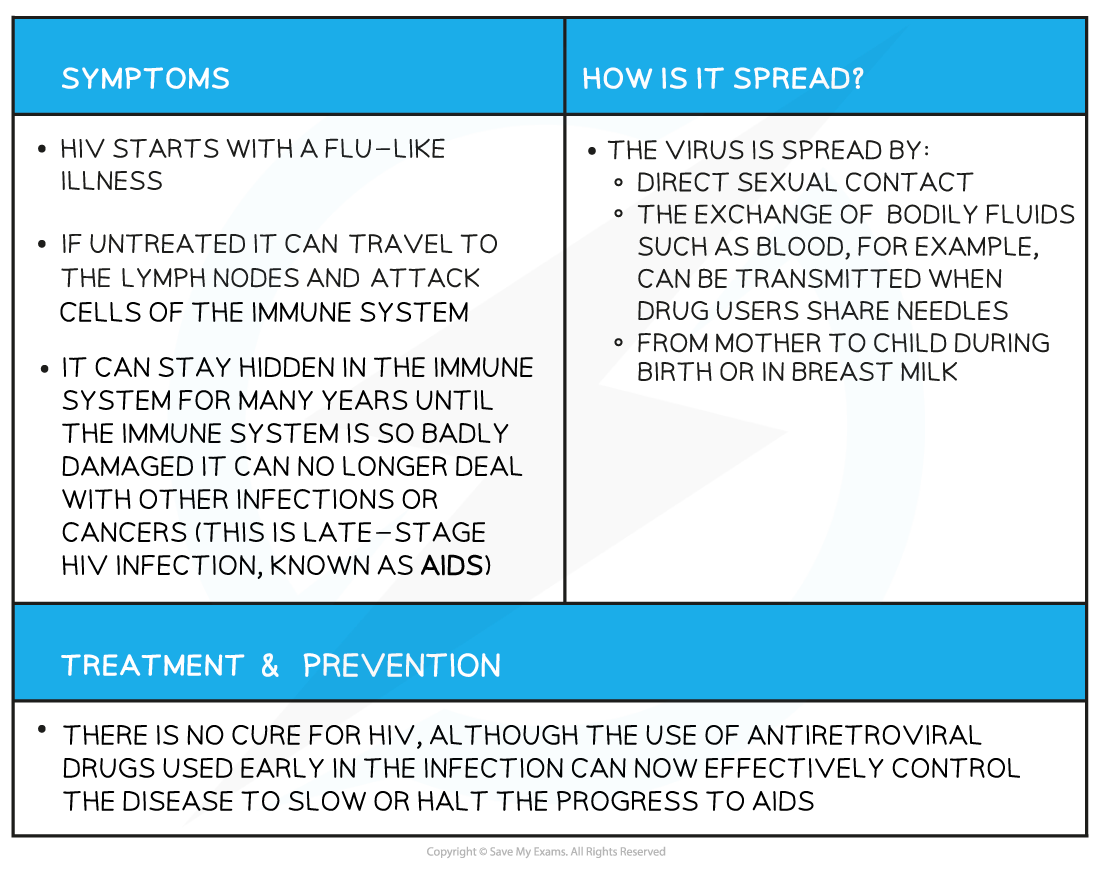- 翰林提供学术活动、国际课程、科研项目一站式留学背景提升服务!
- 400 888 0080
Edexcel IGCSE Biology 复习笔记 1.2.5 Pathogens
Edexcel IGCSE Biology 复习笔记 1.2.5 Pathogens
Types of Pathogen
- A pathogen is any microorganism that causes disease in another organism (e.g. in plants or animals)
- Many microorganisms are pathogens including:
- Bacteria
- Fungi
- Protoctists
- Viruses
- Not all species within these groups (apart from the viruses) are pathogens, as many bacteria, fungi and protoctists are harmless and do not cause disease
- However, all viruses are pathogenic as they can only exist by living inside the living cells of other organisms (or by using these cells to create more viruses)
Pathogenic bacteria
- Pathogenic bacteria do not always infect the hosts of cells, they can remain within body cavities or spaces
- M. tuberculosis causes tuberculosis (TB) in humans
- The bacteria infect the lungs, causing a chronic cough and bloody mucus
- It is a disease often associated with poor hygiene and sanitation
- M. bovine in cows can also transmit to humans to cause TB
- N. meningitidis causes bacterial meningitis in humans
- Very few bacteria can cross the barrier created by the meninges (the tissue that surrounds the brain and spinal cord) however N. meningitidis crosses this barrier to cause acute inflammation
- Inflammation of the meninges causes symptoms such as fever, headache, neck stiffness and a characteristic rash
Pathogenic fungi
- Fungal diseases are much more common in plants than animals
- Cattle ringworm and athletes foot are fungal diseases that exist on the surface of the skin
- Fungal diseases in plants tend to be much more serious and can threaten entire crops
- Black Sigatoka is a fungal disease in bananas
- It spreads through the leaves of the plant, reducing its ability to photosynthesise
- The lack of photosynthesis causes parts of the leaf to die; producing black streaks
- Eventually, the whole leaf dies
Pathogenic protoctists
- Plasmodium falciparum is a protist that causes severe forms of malaria in humans
- The parasite is spread by mosquitoes
- Infected individuals experience fever, chills and fatigue
- P. infestans causes the infamous potato blight
- The pathogen is unusual as it has some fungal characteristics
- It is transmitted via spores
- The first signs of potato blight are small, dark brown marks on the leaves which quickly increase in size and number
- The protist destroys potato and tomato crops leaving them completely inedible
Viruses
- Viruses are not usually included in the classification of living organisms as they are not considered to be alive
- This is due to the fact that viruses do not carry out the 8 life processes for themselves
- In fact, the only life process they seem to display is reproduction but even to carry out this process they must take over a host cell’s metabolic pathways in order to make multiple copies of themselves
- Viruses, which have a wide variety of shapes and sizes, all share the following biological characteristics:
- They are small particles (always smaller than bacteria)
- They are parasitic and can only reproduce inside living cells
- They infect every type of living organism
- They have no cellular structure but have a protein coat and contain one type of nucleic acid, either DNA or RNA

Structure of a typical virus
- Examples of viruses include:
- The tobacco mosaic virus (TMV) causes discolouring of the leaves on tobacco plants by preventing the formation of chloroplasts
- The HIV virus causes AIDS
- The influenza virus causes the ‘flu’
Tobacco mosaic virus
- Tobacco mosaic virus (TMV) was the first virus to be isolated by scientists
- It is a widespread plant pathogen that infects about 150 species of plants including tomato plants and cucumbers
TMV Table

HIV
- HIV (Human Immunodeficiency Virus) is a virus that can eventually lead to Acquired Immunodeficiency Syndrome (AIDS)
HIV Table

Influenza virus
- Three different influenza viruses infect humans to cause the flu
- Influenza A, influenza B and influenza C infect the cells that line the airways
- They cause a high temperature, body aches and fatigue
- Influenza A is the virus that causes the most cases of flu globally
转载自savemyexam

最新发布
© 2025. All Rights Reserved. 沪ICP备2023009024号-1









